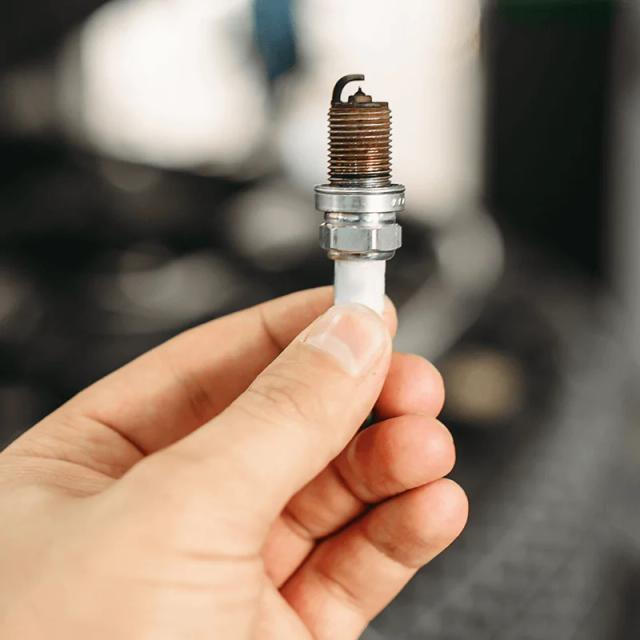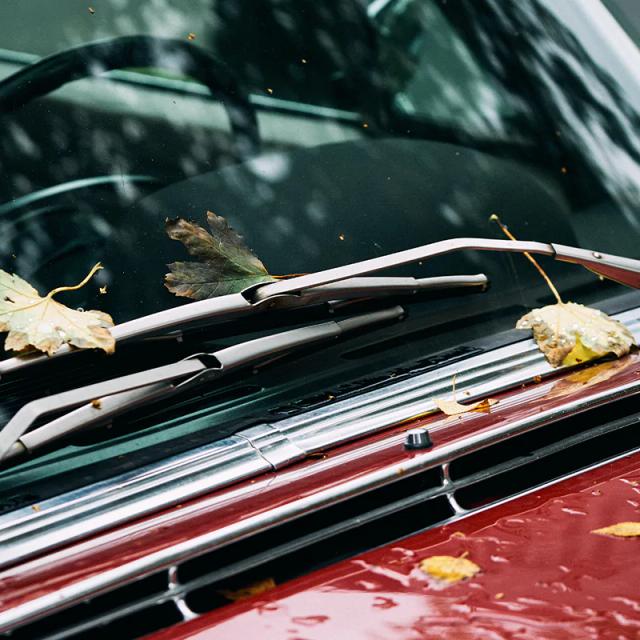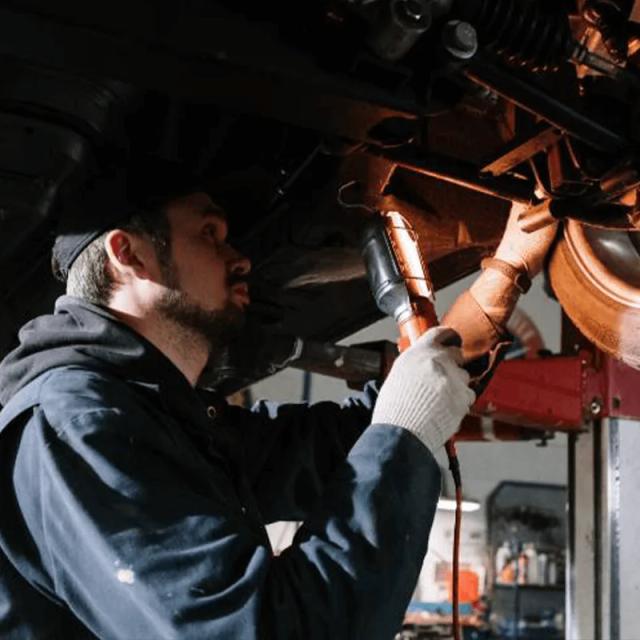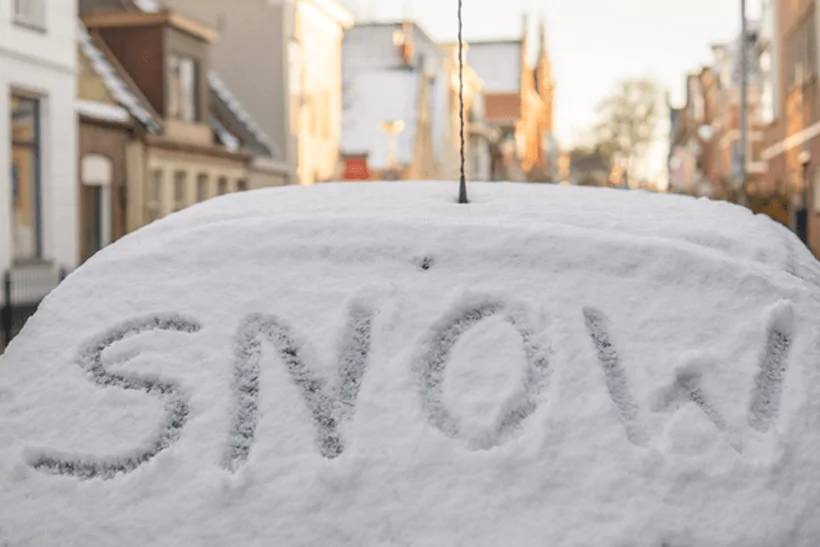
Our cars go through a lot during the winter months. Ice-cold temperatures, heavy snow, and pothole-strewn roads can all wreak havoc with your vehicle — particularly the engine, battery, and tyres. But, taking the time to carry out a short winter car check at the start of the season could save you a lot of headaches later on.
In this guide, we’ve put together some simple maintenance checks you can carry out to make sure your car is in good working order and ready to face whatever the winter brings. We'll share a 10-point winter car check that you can perform at the start of the season to prepare for the arrival of colder weather. You can also find a list of the essential supplies and emergency equipment you should keep in your car during winter to keep yourself safe. Read on to get your car winter-ready.
Your 10-step winter car check
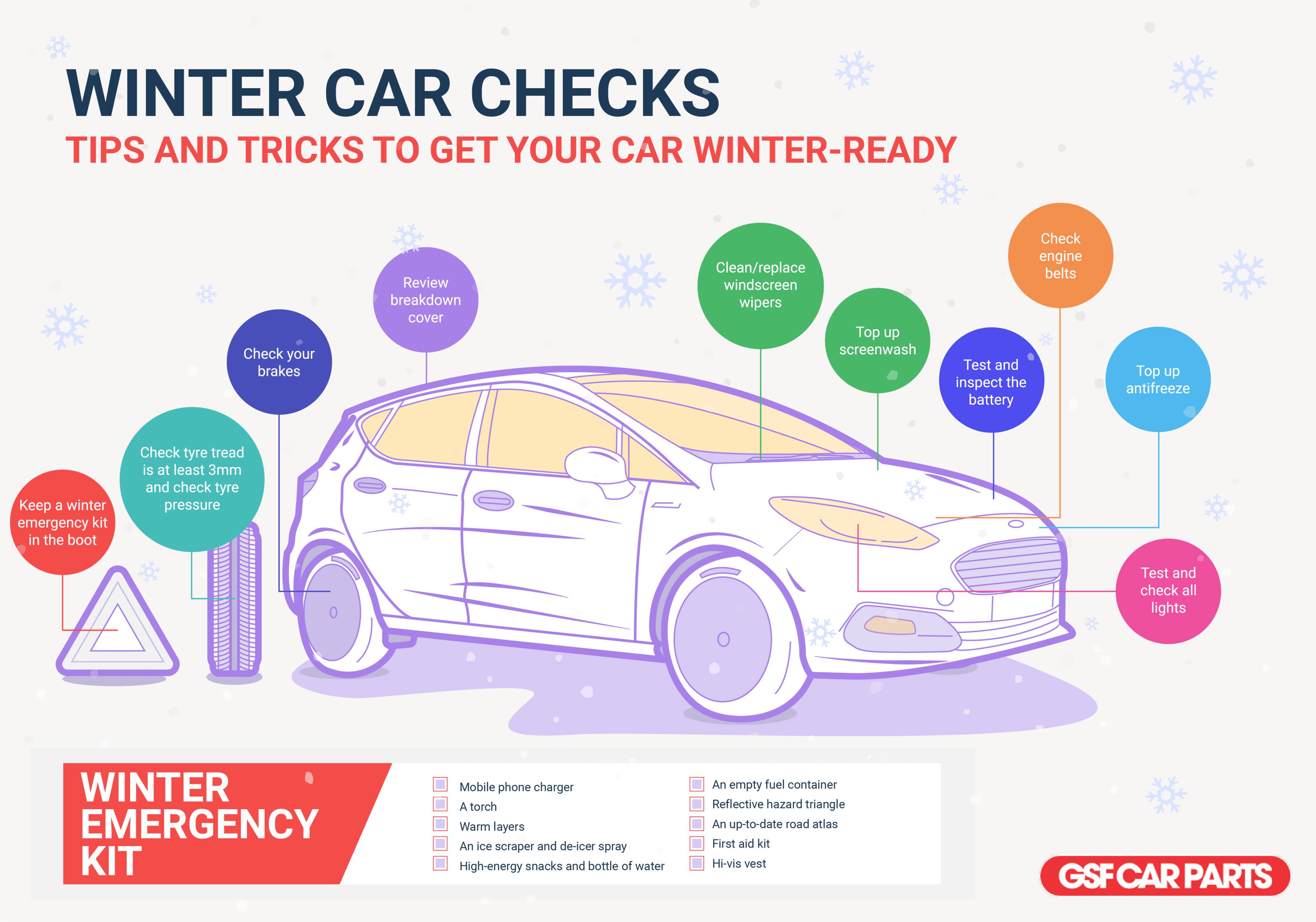
The best way to prepare your car for the upcoming season is to perform a winter car check before those colder, darker nights start to take hold. This is essentially a mini service for your vehicle that focuses on the parts that are most likely to be affected by cold weather or poor conditions. It's best to carry this check out in the late autumn or early winter, before the worst of the weather has arrived. Take a look at the checklist below to get started.
Remember, if you're not confident carrying out these checks at home, then you can book your car in for a professional service, which will cover most of the areas we've highlighted below.
1. Test and check the lights
You're going to be relying on your car lights a lot during those long, dark winter nights (and mornings). So, you'll want to test out all your car's exterior lights — including the headlights, indicators, main and dipped beam lights, and brake lights — to make sure everything is in full working order. The simplest way to do this on most cars is to press the hazard lights button and then walk around your car to check that everything is flashing as should it be.
If any of the bulbs aren't working properly, then you'll need to fit a suitable replacement. You can find the right type of bulbs, along with instructions on how to do this, in your car owner's manual. Don't forget to check the full beam headlights and fog lights too, as you're likely to need these more frequently during the winter.
After you've tested the function of your car lights and checked all the bulbs, you should take time to inspect the lens casing and covers to look for any cracks or damage. It’s also a good idea to take this opportunity to clean both the front and rear lights, to make sure nothing is dimming their brightness. We'd also recommend stocking up on a few replacement car bulbs now — this way, you won't be caught short on a dark winter's morning.
2. Check tyre tread and pressure
Next, take the time to check your tyre tread. While this is something you should be doing regularly all-year round, it's especially important during the winter, when wet and icy conditions reduce your car's grip on the road surface. While the legal minimum is 1.6mm, we would recommend that you maintain a tread depth of at least 3mm at all times. This will ensure better grip and stability on those treacherous winter roads. Take a look at our guides to checking car tread depth to learn how to do this.
You should also check your car's tyre pressure at this point, too. Cold temperatures can also cause your tyre pressure to drop, so you can help prevent this by making sure your tyres are at the manufacturer's recommend level before bad weather arrives. We have a handy guide to performing a tyre pressure check that will take you through this step by step.
In addition to checking the pressure and tread depth, you'll also want to check that the tyre and wheel hub are generally in a good condition, with no visible cracks, wear, or other damage. If you often drive in tough conditions out in remote areas with poorly maintained roads, then you could even consider switching to a set of winter tyres, which will provide extra grip and stability. Don't forget to check the condition of the spare tyre, too.
3. Top up your car's antifreeze
If the coolant system is allowed to freeze during very cold weather, it could cause serious damage to the car radiator, which will be costly to replace. So, it’s a sensible idea to check and top up your car with antifreeze at the start of the winter.
The coolant in most cars needs to be a 50/50 mix of antifreeze and water. The antifreeze works to lower the freezing point of the coolant mixture, so it won't freeze up when the outside temperatures drop below zero. But, the compounds in the antifreeze gradually degrade when they come into contact with water, meaning that they become less effective over time, which increases the freezing point of the coolant. So, the antifreeze mixture needs to be replenished every couple of years or so.
To do this, all you need to do is add the product to your vehicle's coolant reservoir according to the instructions on the bottle and in your owner's manual.
4. Clean or replace your windscreen wipers and top up the screenwash
Rain, snow, and wet roads covered in mud and grit mean that our windscreen wipers work overtime during the winter months, so you should take the time to check these as well. To do this, feel along the edge of the blade carefully: there should be no nicks or dents. If they're starting to look and feel worn out, then you'll need to buy and fit some replacement wiper blades: you can learn more about how to do this in our guide on how to change wiper blades. If they're starting to look and feel worn out, then you'll need to buy and fit some replacement wiper blades. If not, simply wipe the blade down with a soft cloth to make sure it’s nice and clean.
Your windscreen wipers can only do a good job of cleaning your windshield if your car is topped up with screenwash, so you should also check the levels and top up if necessary. All you need to do is mix the product according to the instructions on the packaging — most types need to be diluted with water before you use them — and then add it to the screenwash reservoir until it falls between the minimum and maximum markings on the side of the tank.
It can be a good idea to use a higher ratio of screenwash to water during the winter months, as this will help to keep your windscreen clear in poor weather conditions. You can usually find information about this on the screenwash packaging.
5. Check the engine oil and top up if needed
Oil is the lifeblood of the engine. It provides essential lubrication for the many moving parts that keep the engine running, as well as helping to control the operating temperature to prevent overheating. So, this is an important part of any vehicle maintenance routine, including the winter car check.
Some cars have electronic oil level sensors on the dashboard which will tell you when the oil is running low, but, for most vehicles, you'll need to get under the bonnet and check the oil using the dipstick. Your car owner's manual will explain exactly how to do this, along with how to top up the oil if it’s looking a little low. It should also specify which type of engine oil is best for your vehicle. Alternatively, enter your vehicle details or registration into our engine oil finder to find the right sort of oil for your car. If you need to completely drain and replace the oil, take a look at our guide to changing engine oil to learn how to go about this.
6. Test and check the battery
The last thing is you want to wake up to on an icy winter's morning is a flat battery, but this can be an all too common occurrence. Cold temperatures slow down the electro-chemical reactions inside the battery, making it more sluggish and reducing its ability to provide sufficient power to start and run the car. This is why car batteries tend to die more often in the winter.
While there's not much you can do to stop cold temperatures taking their toll on your battery, checking and testing it at the start of the season will flag any serious issues before they get worse. It will also help to clean the battery terminals and ensure that the battery connections are secure, with no loose or broken wires. You should also check the condition and performance of the alternator at the same time.
Car batteries typically last around 3–4 years, so, if you're due a replacement, this would be a great time to get it sorted. If you need to brush up on how to do any of this, take a look at our guide to checking, charging and changing car batteries, where we take you through each process step-by-step.
7. Check your brakes
Your car's braking system obviously needs to be in good condition all-year round. But, having responsive brakes is especially important when driving in wet, icy, or snowy conditions, so it's well worth taking a quick look at them as part of your winter car check.
When checking the brakes, you'll want to inspect the brake disc, calipers, brake pads, and other brake parts for signs of wear and tear. While you’re at it, you could also give the brakes a quick clean with a specialised brake and clutch cleaner if they're looking a bit grimy.
If you've been finding that the braking seems less responsive while you’re driving, then it may be time to change the brake fluid.
8. Check the various engine belts
While your car's timing belts and fan belts are designed to be incredibly durable, very cold temperatures can put them under extra pressure. A broken belt can take out your entire engine, so it's very important these are in good condition as you head into the colder months.
Check that the timing belt, fan belt, and alternator drive belt and are all in good condition, with no signs of wear, small cracks, or other damage. You should also check that the tension is correct: you can find the correct tension in the owner's manual. This check requires some mechanical knowledge; if you're not 100% confident, you can always take your car to a professional.
9. Review your breakdown cover
You'll want to take a minute to review the terms of your breakdown cover, to see if it's still suitable for your needs. Most problems occur when a car will not start from home, so be sure your policy includes home call-outs. If you drive several different vehicles quite frequently, then it may be worth switching from a vehicle-cover type policy to a personal cover policy. This will provide roadside assistance for any broken-down vehicle you're driving, even if it doesn’t belong to you.
If you don't have breakdown cover at all, then it’s well worth considering, as this could come in very handy should you ever need roadside assistance. Remember to have the contact number for your recovery service in the car, so you always have it handy in case of a breakdown.
10. Put together a winter emergency kit
Finally, you'll want to put together a winter emergency kit and stow it in the boot of your car. This is a selection of supplies and equipment that will come in handy should you break down or get stranded somewhere in cold weather. You can read all about this in our winter emergency kit checklist section later in this guide.
How to maintain your car throughout the winter
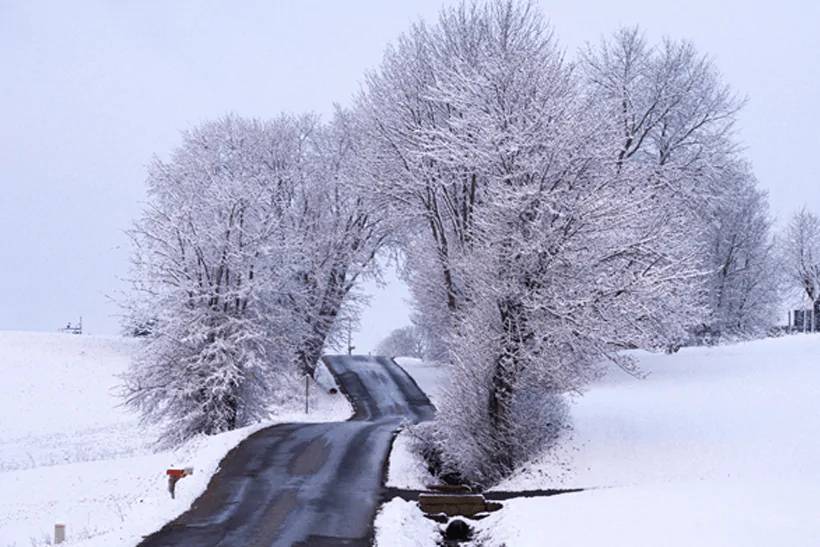
Once the colder weather has really set in, you should continue to perform a mini winter car check every so often to make sure your car remains in good condition. So, we would recommend that you repeat steps 1–5 of the checklist above every couple of weeks throughout the winter:
This will only take ten minutes or so to do, but it can save you a lot of hassle — and costly repairs — in the long term.
Winter car checks for before you travel in bad weather
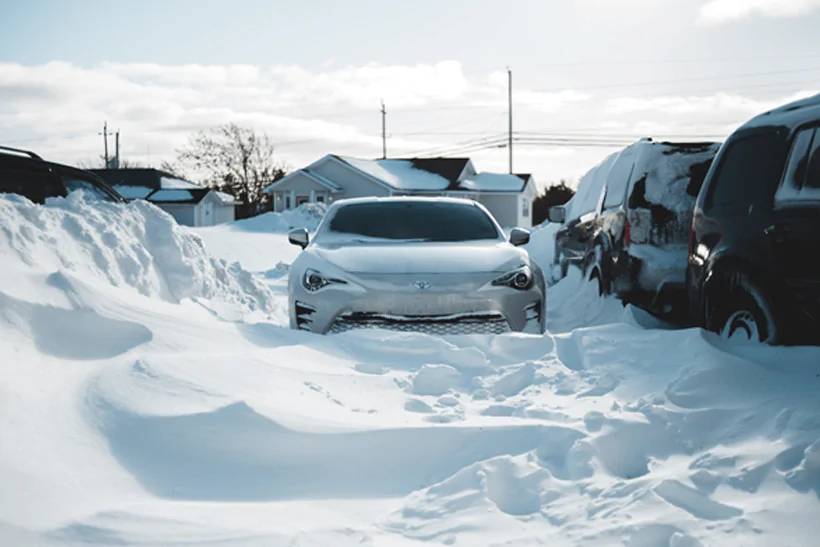
So, you've carried out your 10-step winter car check, and you're performing the mini maintenance routine we’ve suggested above every couple of weeks. But there are still a few more things you'll want to bear in mind when the temperature drops below zero. Here, we’ve shares some extra steps you'll want to take to prepare for journeys in extremely cold weather.
Check the weather forecast
It’s always sensible to check the forecast before you set off during the winter — you never know when the weather might turn. It's always best to avoid poor road conditions, especially if the Met Office has warned against travel, so try to time your journeys accordingly or seek an alternative mode of transport.
Remember to plan ahead and check what the weather is going to be like across the entire duration of your route, especially on longer journeys. It may be fine and clear where you live, but conditions may be much poorer out in remote and rural areas — especially at high altitudes.
Plan your route
Take the time to plan your route out in advance. This is especially important in winter, when poor visibility and bad conditions can make finding your way much tougher. Certain types of roads—particularly rural back roads —can become much more treacherous in snowy or ivy conditions, so even if they're on a familiar route you many want to seek an alternative that is more likely to have been cleared or gritted.
Be sure to carry an A–Z or other road map with you, too. Certain roads become impassable or you may be faced with an unexpected diversion, so it will help to have something to guide you — especially if you get caught in an area with no GPS signal.
Thoroughly defrost your windscreen
Before you hit the road, you'll need to make sure the windscreen is de-iced and clear of any snow. Running the engine and putting the heating on full blast while the car is still stationary will eventually get the job done, but you can also use an ice scraper and some de-icer to speed things along. Never use hot water to try to de-ice the windshield, as this can cause the glass to crack. Remember to remove any snow from the roof of your car, too, as otherwise this may fall down and obscure the windshield once you start driving.
Failing to properly de-ice the windscreen could land you with an £100 fine and three points on your licence, so take the time to fully clear it every time you drive. Of course, in extremely cold weather, this can take several minutes, so leave yourself plenty of time in the morning.
Remember, never leave your car unattended with the keys in the ignition when de-icing your car. While it might be tempting to nip back into the warmth of your house while your car de-frosts, there's a real risk your car could be stolen, so it’s better to be safe than sorry.
Let the engine warm up a little
Cold engines can be sluggish and slow to get going, so allow the engine to idle for 30 seconds to one minute before you set off in winter. This is especially important if your car has a carbureted engine, as these take longer to get going in cool temperatures. Your engine will continue to warm itself up as you drive, so take it nice and easy for the first 10–15 minutes of your journey while it gets up to speed.
Winter car emergency kit checklist
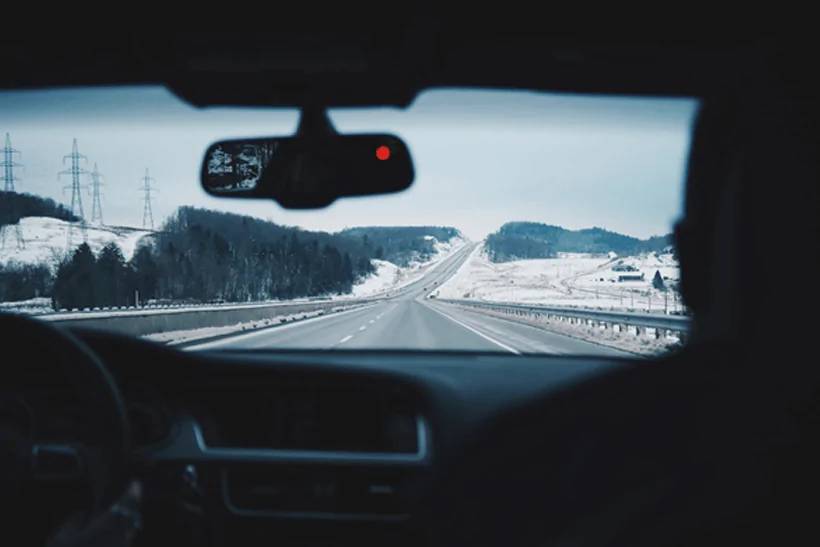
If you carry out the winter car checks and maintenance routine we've shared above, you should be much less likely to be hit by a breakdown when the cold weather starts to bite. But, much like the British weather itself, our cars aren't always predictable. Sometimes, even if you're diligent, things can go wrong.
Every driver fears getting stranded or stuck in wintry conditions, so it's very important to have the right equipment supplies in your vehicle to help you out should you break down or get snowed in. We recommend putting together a winter car emergency kit in the autumn and keeping this in your car from late November until spring.
What needs to be in your kit will depend on the kind of driving you do. If you only use your car for commuting and you never leave the city, the chances of getting stranded are slim. Even so, it’s always sensible to carry a winter emergency kit containing the following essentials:
A car phone charger: You can’t call for assistance with a dead phone, so make sure you have a way to keep it charged up. A fully charged power bank is also a good option.
A torch: This will come in handy during those dark winter nights.
Warm layers, including gloves and socks. If you do break down and need to walk for help or remain with your car while you wait for assistance, you'll certainly appreciate having some warm clothing to put on.
Hi-vis vest: This will ensure you're visible to other road users should you need to seek help on foot.
An up-to-date road atlas: Many people rely on our satnavs or mobile phones for navigation these days, but a breakdown or loss of reception could leave you in the lurch. So, it's good to have a paper backup.
An ice scraper and de-icer spray: In case you need to de-ice your windscreen after stopping off somewhere.
A high-energy snack (or two) and a bottle of water: This will keep you going if you need to wait a while for assistance.
An empty fuel container: No one ever expects to run out of fuel, but, if the worst does happen, you can walk to the nearest petrol station and fill up this way.
Reflective hazard triangles: These can be used to warn other road users in the event of a breakdown.
First aid kit: This is a handy thing to keep in your car all year round.
If you'll be out on rural roads or driving long distances, you should have the following extras in your emergency kit:
A portable snow shovel: You never know when you might need to dig your car out of a snowdrift, especially when travelling through mountainous or hilly areas.
Grit: A small bag of grit can be useful if you get snowed in or are struggling for traction.
Sturdy walking boots: If you need to walk a long distance in tough weather, you'll certainly appreciate having sturdy footwear.
A thermal blanket: This will provide an extra insulating layer if you become stranded.
Jump leads: These can be used to get your engine started should the battery die while you're out and about.
Jump starter: In remote areas, you may find that there aren't many other motorists around who can help you jump start the battery. A jump starter will enable you to do it by yourself.
By carrying out the winter car checks and maintenance we've shared here, your vehicle should still be in great condition when spring (finally!) arrives, and you should be able to keep yourself safe on the roads in bad weather. Here at GSF Car Parts, we have everything you need to service, maintain and repair your car all-year round — take a look at our full range of car parts, maintenance products, and tools to find what you need. You can also find many of the products mentioned above in our winter accessories shop.
In addition to the winter car tips and tricks we've shared here, we also have lots more handy how-to guides and FAQs in our dedicated auto knowledge hub — take a look to learn more about every aspect of vehicle maintenance.


